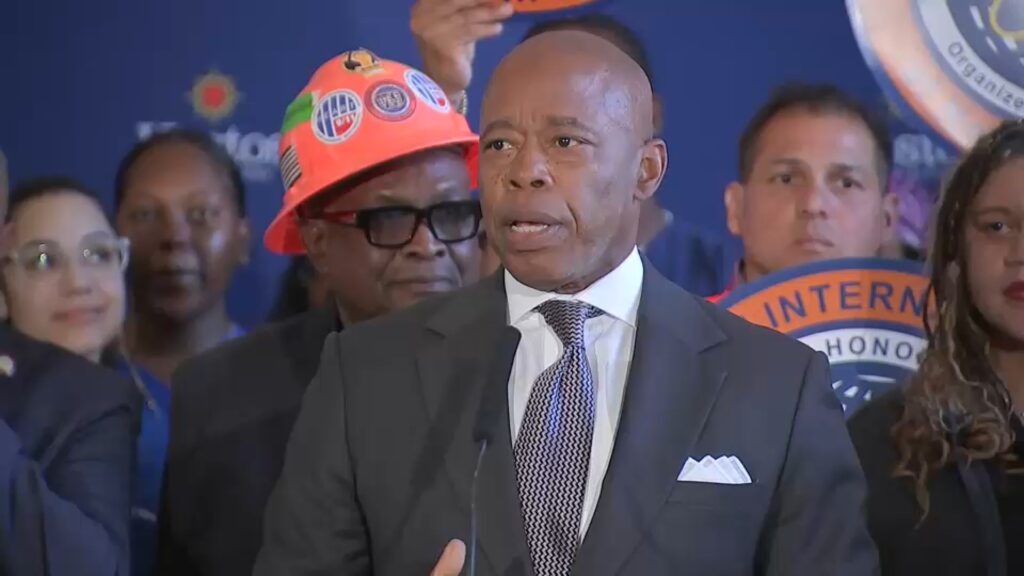New York City Mayor Adams has announced plans to conduct his own internal poll to determine whether his campaign for re-election is viable. The decision underscores the importance of data-driven strategies in modern political campaigns and reflects the mayor’s focus on understanding voter sentiment firsthand.
Campaign insiders indicate that the poll will measure a range of factors, including public approval, key issues influencing voter decisions, and potential challenges from political opponents. The results will guide decisions on campaign funding, messaging, and overall strategy.
Mayor Adams’ approach signals a departure from reliance solely on external polling data. By using a proprietary poll, the campaign can focus on metrics tailored to the mayor’s unique electoral context and adjust messaging in real time.
The mayor’s team is expected to examine approval ratings, demographic support, and issue-specific priorities. Topics such as public safety, housing, transportation, and economic development are likely to play a central role in shaping voter perceptions and campaign strategy.
Political analysts note that internal polling is a common tool in competitive elections. It allows candidates to make informed decisions regarding resource allocation, advertising, and voter outreach. For Mayor Adams, the poll’s insights may prove decisive in determining whether to fully commit to a re-election campaign.
The mayor’s announcement has already generated discussion among city residents, political commentators, and local media. Supporters view it as a proactive step to ensure the campaign aligns with voter priorities, while critics argue that polling alone cannot fully capture the complexities of voter behavior.
Mayor Adams has faced scrutiny over his handling of various city challenges, including crime rates, public transportation issues, and housing affordability. The internal poll will provide insights into how these topics are influencing public opinion and which areas require focused attention.
Campaign strategists emphasize that the timing of the poll is critical. Conducting it early in the election cycle allows the mayor to adjust messaging, identify potential vulnerabilities, and develop targeted outreach efforts for key voter groups.
The results will likely influence decisions on fundraising and endorsements. Strong internal numbers could attract donor support and key political alliances, while weaker results might prompt reassessment of campaign priorities or even the consideration of alternative political strategies.
Historically, candidates have relied on internal polling to make high-stakes decisions. In large, diverse cities like New York, understanding local sentiment is particularly important, given the varied concerns of residents across boroughs, socioeconomic backgrounds, and demographic groups.
Mayor Adams’ move also highlights the increasing role of analytics and voter data in political campaigns. Advanced polling techniques, combined with demographic modeling and behavioral insights, provide campaigns with a nuanced understanding of the electorate.
Political observers note that internal polling can sometimes differ from public polls due to methodology, question phrasing, and sample selection. Campaign teams must carefully interpret results to avoid missteps in strategy or messaging.
Public reaction to the mayor’s announcement has been mixed. Some voters welcome the transparency and data-driven approach, while others question whether reliance on polls may overshadow engagement with constituents through direct dialogue and community events.
The mayor has indicated that the poll will be conducted professionally and analyzed thoroughly before any final decisions are made regarding the campaign. Officials stress that the process is meant to provide clarity and guide responsible campaign planning.
As New York City’s political landscape evolves, the use of internal polling to assess campaign viability reflects a broader trend of strategic, evidence-based decision-making in municipal elections. Mayor Adams’ reliance on this approach may set the tone for how candidates evaluate their standing and plan for success.
The results of the internal poll are expected to be released to campaign leadership soon, shaping the trajectory of Mayor Adams’ re-election efforts and offering insights into voter sentiment across the city’s diverse communities.



